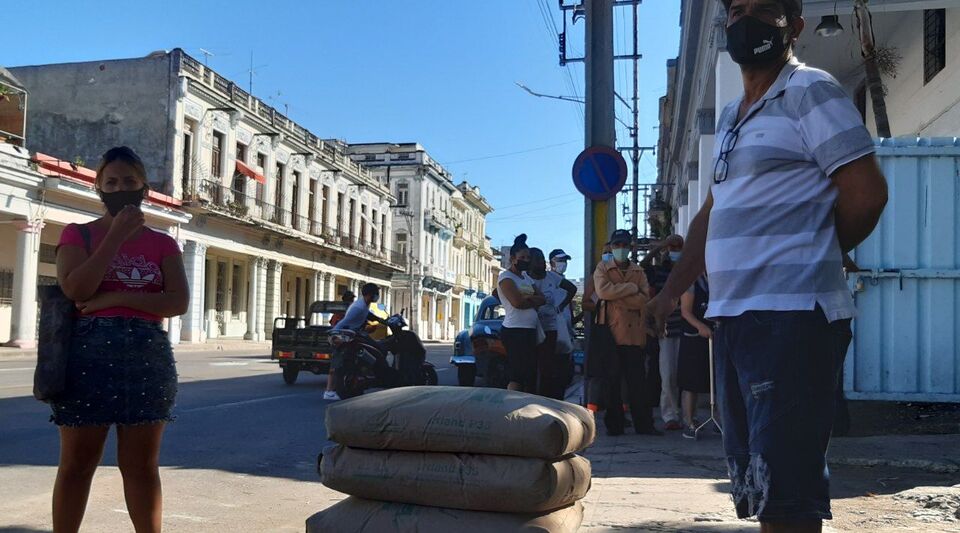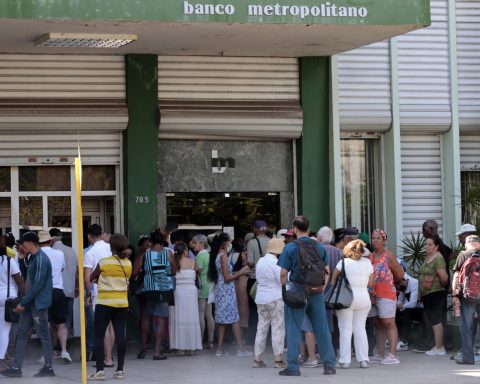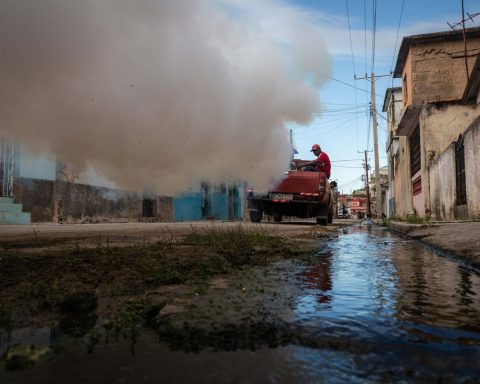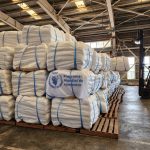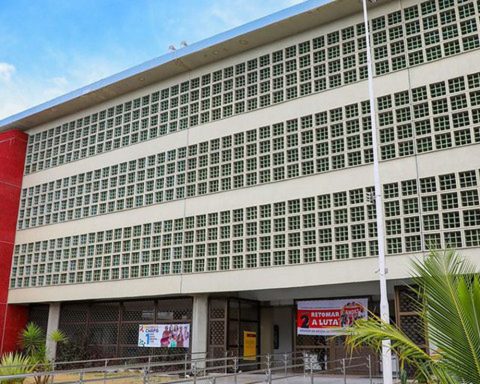On the 25th, as soon as Tamara saw the cement being removed from the door of the Havana hardware store located between Infanta and Desagüe, she took a photo and sent it to her mother. Julia had been searching desperately for months and Santa Claus seemed to have brought it in his sack, even in freely convertible currency (MLC), at a price of $ 10. But when he arrived there was nothing left.
“The production, in general, is depressed since the country normally produces up to 1,500,000 tons and this year among all the plants it should not reach a million,” he says this Tuesday Gonzalo Reina Aguilar, director of the Siguaney Cement Company, in Sancti Spíritus, to the provincial newspaper Escambray. The words confirm a shortage that has been felt in the street throughout the year, but also reveal the order received by the Cuban authorities to sell the desired raw material in MLC.
“We have received the indication to sell a lot of cement in MLC and, although it seems contradictory, it is a good business for the country. Before, this input was exported and the ton was sold at a little more than 50 dollars, and where was it built? of the Cuban borders “, justifies the official. “The country decided not to export and now some 3,000 tons are sold in those stores, but it is what the country needs, which does win, because what is built stays in Cuba.”
Its director explains that at the beginning of the year, when they had to start production for the “priority programs in the country” and the sale to the population, they found that there was no firebrick
The industry is praised for the article, titled Siguaney cement factory is still standing, for having managed to produce more than 43,000 tons of gray cement of the 65,000 planned for 2021, a considerable deficit but which the text considers a feat judging by the obstacles encountered along the way.
Its director explains that at the beginning of the year, when they had to start production for the “priority programs in the country” and the sale to the population, they found that there was no firebrick that is needed to make the gray cement and that it leaves from its own factory or that of Cienfuegos. This last stood for four months, as explained Granma weeks ago, due to fuel restrictions “derived from the economic, commercial and financial blockade imposed by the United States Government on Cuba and its siege against suppliers.”
Reina Aguilar describes the solution found to solve this problem as “‘revolutionary’ due to the amount of ideas that we had to add, and so far close to 19,000 tons of clinker have been made without being planned.” Although he does not describe the creative torrent, the official says he has traveled the country in search of the famous bricks with which to recover the kilns. The 43,000 tons mentioned have been made in them.
Still, the outlook is not very rosy. Engineer Saúl Rodríguez Pérez explains that the factory, which is more than 50 years old, was a gem when production started in 71, but the current fear is that something will fail and it will have to be fixed.
The furnace, he explains, is propped up as it lasts about three months and started in November. “Repairs and some advances have been made to it that have maintained it, but the life of a basic brick area is not more than one year. (…) Annually the basic refractory element must be replaced and that is around 300,000 euros” .
There is a chronic shortage of cement in Cuba, although this year it has worsened, and that sector is a constant source of theft
But the investments must go elsewhere. As he explains, the Santiago de Cuba factory is under construction and the modernizations of Nuevitas and Siguaney were planned, but this has finally been left out and the eastern part of the country has been prioritized, where there is more demand and less supply.
There is a chronic shortage of cement in Cuba, although this year it has worsened, and that sector is a constant source of theft. When the State decides to undertake a work due to the poor condition of a street and places its materials there, the residents tend to be more happy about the arrival of a bag of concrete to the neighborhood with which to satisfy their needs than for the repair. In this way, it is common to see how, wherever there is an arrangement of this type, the walls and renovations in nearby houses end up multiplying while the original hole is hardly repaired.
The Siguaney factory plans to produce 10,000 tons of white cement, another of the island’s scarce goods, where almost everything ends up being done with gray, known as P350, even if it is not suitable for the work to be carried out, such as the installation of tiles or tiles.
It is also common to use material in poor condition in an inconvenient way. The bags used to store the cement are not very resistant to the humid Cuban climate, so, although it is protected in the best possible way, the material cakes or hardens, and the owners have to look for an expert to crush it to do so. reusable. With all this, the loss of quality is evident.
Furthermore, the demand for cement among the Cuban population is skyrocketing, because it is not limited only to works and improvements, but to melts, operations that are carried out with certain frequency in homes in poor condition, which are many in Cuba, to avoid leaks, patch holes, and try to maintain buildings that barely hold up.
________________________
Collaborate with our work:
The team of 14ymedio He is committed to doing serious journalism that reflects the reality of deep Cuba. Thank you for joining us on this long road. We invite you to continue supporting us, but this time becoming a member of our journal. Together we can continue transforming journalism in Cuba.
